Wants, desires, commitments, distractions — our lives are filled with endless demands, as our day-to-day oscillates between tasks to do and persistent interruptions. In a fast-paced and highly-virtual environment, there's a premium value on the ability to stay focused on important tasks and remove distractions so that we can stay happy and calm.
Arms Race Nutrition (ARN) has been around for a few years now, smashing every obstacle in their path. The first time we covered the brand led by uber-popular fitness influencer Julian Smith and industry pioneer and professional bodybuilder Doug Miller, we wrote about the original Arms Race Clarity capsule formula. The dynamic duo, backed by an all-star team, has turned ARN into far more than an "influencer brand".
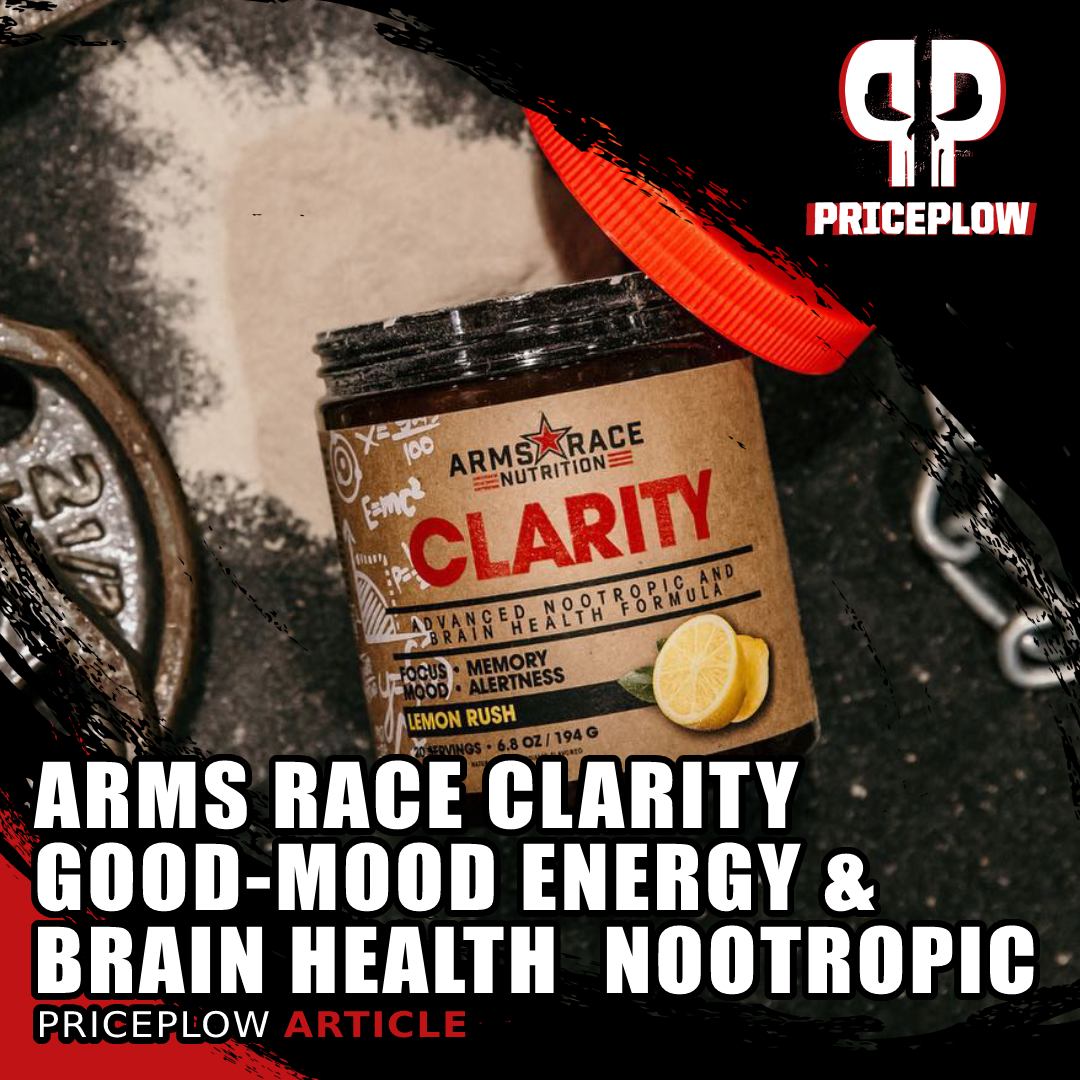
Arms Race Clarity has moved from pill to flavored drink powder, changing from a "mental health" supplement towards a more energized nootropic that still brings good-mood properties!
It was time to reach more "Arms Dealers" with a nootropic that best serves their following:
Arms Race Clarity Powder: An energized brain health nootropic
Arms Race Clarity originally began as a unique "wellness nootropic" that aimed to optimize mental focus and well-being. It's now shifting away from the "mental health" category a bit, moving towards an energized nootropic and brain health formula.
Clarity is still very much different from other nootropics. It tackles energy, cognition, brain health, yet still has incredible mood-boosting benefits. It pumps up the blood flow with nooLVL, but is no longer stimulant free -- there's a unique dual caffeine blend (yielding 137.5 milligrams of caffeine per serving) that includes a delayed release of caffeine (37.5 milligrams) after the initial 100 milligrams of caffeine anhydrous, topping you off after the initial rush.
Clarity still has the mood-boosting adaptogenic nootropic bacopa monnieri, but now also has Sabroxy extract standardized for oroxylin A, which we think has serious potential in supplements like this. There's also plenty of carnitine, choline, tyrosine, and caffeine-synergizing enXtra.
In this post, we'll dive into the new Clarity Powder formula. Before we get to that, make sure you're signed up for Arms Race Nutrition news and deal alerts so that you can stay up-to-date with what Smith and the team have going on.
Arms Race Nutrition Clarity – Deals and Price Drop Alerts
Get Price Alerts
No spam, no scams.
Disclosure: PricePlow relies on pricing from stores with which we have a business relationship. We work hard to keep pricing current, but you may find a better offer.
Posts are sponsored in part by the retailers and/or brands listed on this page.
This area is reserved for Team PricePlow's upcoming videos.
Subscribe to our channel and sign up for notifications so you catch it when it goes live!
Arms Race Nutrition Clarity Powder Ingredients
In a single 1 scoop (9.7 gram) serving of Clarity Powder from Arms Race Nutrition, you get the following:
-
nooLVL™ (Inositol Enhanced Bonded Arginine Silicate) - 1,600mg
First, let's get the blood flowing so that everything works better. NooLVL is an inositol-stabilized arginine silicate (ASI) complex developed and patented by Nutrition21.[1] It's designed to boost nitric oxide (NO) production, which can be a major boon for brain health and cognitive performance thanks to the resulting increased blood flow.
NooLVL in context: arginine’s bioavailability problem
Nutrition21's ASI ingredients were designed to solve a specific problem in supplement science: although arginine is the most direct precursor to nitric oxide (NO) production, standard L-arginine is hampered by low oral bioavailability.
For this reason, the supplement industry moved away from arginine and towards citrulline, which is a precursor to arginine and significantly more bioavailable. The problem with citrulline is that you need pretty big doses to get the most out of it: studies about citrulline's impact on arginine production indicate that returns don't start diminishing until you exceed 10 whole grams of L-citrulline in a single dose.[2]
The idea behind Nutrition21's ASI ingredients (a category that includes not just nooLVL, but also Nitrosigine) is to circumvent some of these issues by creating a more bioavailable form of arginine. In theory, this can give you better effects with far less material.
How inositol-stabilized arginine silicateincreases arginine bioavailability
The oral bioavailability of pure arginine is low due to a phenomenon called the first pass effect, in which stomach enzymes degrade arginine so rapidly that it's almost completely gone by the time the bolus can transit to the intestine -- and that's where would have actually been absorbed into your bloodstream.[3-5]
What Nutrition21 discovered was that you could inhibit this process by blending the arginine with silica and inositol, which buffer it in the stomach and spare it from being degraded by enzymes.[6,7] This chemical buffering enables the arginine to transit through your stomach largely intact, and ultimately be absorbed in far greater quantities through the intestinal wall than pure arginine would be.
Nutrition21’s ASI evolution: how Nitrosigine became nooLVL (NO helps the brain, too!)
The first iteration of ASI from Nutrition21 was marketed as Nitrosigine, and remains incredibly popular with manufacturers as a pre-workout ingredient thanks to its ergogenic NO-boosting properties. Nitrosigine really does give you one of the best pumps money can buy, in our opinion.
As more data and testimonials came out on Nitrosigine, though, it became clear that Nitrosigine's NO boosting wasn't just improving athletic performance: it was having some pretty serious nootropic effects as well.
For example, some of the early studies on Nitrosigine found that it could improve multitasking and memory in healthy young subjects, as well as prevent the temporary cognitive decline that usually follows a heavy workout.[9-11]
This came as a bit of a surprise to an industry that had grown accustomed to thinking of NO-boosting ingredients as ergogenic aids and nothing more, but it makes sense if you think about it: boosting NO is all about improving blood flow and tissue oxygenation, and the brain is perhaps the hungriest for blood and oxygen of any organ in the body.
Nutrition21 had this epiphany pretty quickly, and that's how nooLVL was born. NooLVL was designed as a nootropic-optimized form of Nitrosigine. The main difference is that it contains significantly more inositol than Nitrosigine does.
How nooLVL works: extra inositol
Some important studies have already been done on nooLVL's ability to boost cognitive performance: one found that it could significantly improve reaction times in experienced video gamers,[8,12,13] with another finding that nooLVL can improve attention, concentration, visual representation, forethought, and sequencing.[14] That's a laundry list of cognitive performance dimensions.
nooLVL helped gamers improve scores on tests for attention and concentration, visual representation, and spatial planning, sometimes after a single use.[14]
Although the research on Nitrosigine and cognition is pretty impressive as well, nooLVL seems to improve a much deeper and more specific list of cognitive abilities.
Again, the extra inositol seems like the reason why nooLVL is so good for cognition: inositol is a key component in the phosphatidylinositol cycle, a key regulator of neural activity. Boosting your inositol levels can help facilitate communication between your neurons, by helping your neurons interpret the signals they get from each other.[15,16]
One downstream effect of this is optimized neurotransmitter production,[17] which in turn is crucial for optimized brain function.
While nooLVL is known as a gaming ingredient, Clarity isn't marketed as a gaming supplement -- although it'd definitely excel in that capacity. We love it for the blood flow improvements, which should help literally everything else that comes next:
-
Acetyl-L-Carnitine HCl – 1,000 mg
The quaternary ammonium compound carnitine is responsible for moving fatty acids into your cells, where your mitochondria can take them up and burn them to produce adenosine triphosphate (ATP), your body's fundamental energy currency.[18]
ATP is incredibly important for optimal health – if your body were an automobile, ATP would be the gasoline. Without enough gas in the tank, the car won't start – and if the tank runs dry, the car dies.
The energy a car's engine creates in burning gas powers not just the locomotion of the car, but every secondary function of the car as well – the lights, the AC, the stereo. It's the same with ATP: every single task your cells are asked to perform consumes ATP as fuel.
Carnitine: an ATP-boosting “super-supplement”
Carnitine has been shown to upregulate certain mitochondrial enzymes that are crucial for ATP production.[19,20] Carnitine also has the ability to stabilize mitochondria, fortifying them against metabolic stress and even improving their function above baseline.[21]
As is the case with anything that directly affects ATP production, carnitine's effects turn out to be far-reaching and varied.
When it comes to long-term cognition, carnitine's ability to protect mitochondrial function can potentially help prevent the onset of severe neurodegenerative illness,[21] which seems to usually include lack of cellular energy at the neuronal level as a major factor.
Carnitine's ability to improve metabolic function also means that it can help potentiate healthy weight loss,[22,23] and improve glucose tolerance by increasing insulin sensitivity.[24]
Acetyl-L-Carnitine (ALCAR) – the nootropic carnitine
There are quite a few different forms of carnitine on the consumer supplement market today. Although any form of carnitine can give you the baseline carnitine effects we discussed above, each form seems to have some unique properties of its own.
Acetyl-L-carnitine (ALCAR) is the nootropic carnitine – it has been used in the supplement industry for many years as a neuroprotective, neurotrophic and anti-depressant ingredient.[25]
The basic reason why ALCAR is so good for the central nervous system (CNS) is that of all known carnitine forms, ALCAR is best at crossing the brain blood barrier (BBB).[26] This is remarkable not just for a carnitine compound, but for supplement ingredients generally: the vast majority of the ingredients we write about exhibit little-to-no ability to cross the BBB.
In other words, ALCAR's magic seems to be rooted in its ability to do what carnitine normally does, except in the brain.
Synergy in Clarity powder with both ALCAR and a choline source (Alpha-GPC)! If you're low on acetyl groups, your choline may not get to the acetylcholine that you want. ALCAR (Acetyl L-Carnitine) helps with that bottleneck.
Animal studies have found that supplementation with ALCAR can significantly increase synaptic plasticity in brain tissue, and facilitate learning.[27]
In one study, healthy mice who took ALCAR for 25 days had significantly higher levels of energy metabolites in their brain tissue, indicating that their neurons had been consuming more energy than usual. Additionally, they had much higher levels of monoamine neurotransmitters, a category that includes famous heavy-hitters like serotonin, dopamine, and adrenaline.[28] Both of these facts seem to indicate an improvement in global cognitive function – the brain energy stuff being particularly important.
In one important human study, elderly men and women (that is, over the age of 65) who'd been diagnosed with mild cognitive impairment scored substantially better on a cognitive performance test after taking ALCAR, compared to a group that took a placebo instead.[29]
A major key to understanding ALCAR's impact on cognition is its apparent ability to reverse age-related decline in mitochondrial function.[30] If you're not a kid anymore, you could probably stand to benefit, at least a little bit, from a good dose of ALCAR.
-
L-Tyrosine – 1,000 mg
Tyrosine is famous as a focus-boosting ingredient. As a precursor to catecholamine neurotransmitters like dopamine and adrenaline,[31] both of which can substantially increase motivation, focus, and perceived mental and physical energy levels.
Supplying your body with tyrosine can help sustain neurotransmitter production in the face of cognitive or emotional stress,[32] helping you work hard for longer before you'll burn out.
In fact, tyrosine is particularly good at boosting cognitive function during sleep deprivation,[33,34] which is one of the most pernicious forms of stress faced by the average modern American. Tyrosine can reverse some of the cognitive impairment that's caused by not getting enough shuteye – one study even found that tyrosine is better at doing this than caffeine, which is most people's go-to wakefulness-promoting drug.[34]
Thyroid and cognition: is there a link?
The other thing we love about tyrosine is its ability to support thyroid function[35,36] by helping your body produce the hormones triiodothyronine (T3) and thyroxine (T4).[36]
This becomes particularly important for anyone who's working out hard or restricting calories for weight loss, as both of these behaviors have been shown to downregulate thyroid activity.[37,38]
There's some evidence that decreased thyroid function might be associated with cognitive impairment, although it's not conclusive.[39]
It's the editorial opinion of Team PricePlow that if you want to ensure optimal cognition, you'd better keep your thyroid functioning optimally. When it comes to thyroid health, hyperthyroidism can be just as bad for cognition, if not worse, so giving your body thyroid hormone precursors like tyrosine is a better strategy than supplementing with the thyroid hormones directly.
-
Alpha-GPC 50% – 600 mg
Alpha-Glycerylphosphorylcholine, which fortunately we abbreviate as Alpha-GPC or A-GPC, is a particularly bioavailable form of the essential B vitamin choline.
Choline plays an important role in many metabolic processes throughout the human body. Arguably the most important of these is in the synthesis of the cellular phospholipid membranes that enclose the contents of your cells, and which serve to keep nutrients in while keeping unwanted foreign bodies like metabolic waste and pathogens out.[40]
Choline is also an important precursor to acetylcholine, a neurotransmitter that assists inter-neuronal communication while helping drive the process of long-term potentiation, which is how your brain consolidates temporary short-term memories into more permanent long-term ones.[41]
Acetylcholine doesn't just affect mental skills: it can also affect psychomotor abilities like balance and coordination.[42,43]
Alpha-GPC is an industry-favorite form of choline, owing to its exceptional bioavailability and ability to cross the brain-blood barrier.[44] We'll have two ingredients below to synergize with this as well.
-
Mucuna Pruriens Extract (Seed) (50% L-Dopa) – 500 mg
Mucuna pruriens is also known as velvet bean. It's native to the tropical climes of India, Asia, and the Caribbean islands.[45]
Mucuna Pruriens is popular for its dopamine and growth hormone boosting properties. Courtesy Wikimedia
The leaves of this plant are rich in antioxidant compounds, and have been used as folk remedies for a huge range of ailments, thanks to its anti-inflammatory and pro-metabolic effects.[45] But what we're interested in for nootropic purposes is the seed of Mucuna pruriens.
As it turns out, the seeds contain huge amounts of levodopa (L-dopa),[46] an important dopamine precursor. L-dopa is capable of crossing the blood-brain barrier and entering your actual brain tissue,[46] where it can directly upregulate dopamine production.
Another important mechanism of action behind Mucuna is its ability to inhibit acetylcholinesterase, the enzyme responsible for breaking down acetylcholine,[47] a key neurotransmitter that we discussed earlier.
Stacking acetylcholinesterase inhibitors like Mucuna with acetylcholine-boosting ingredients like alpha-GPC is a time-tested strategy for nootropic effects, and we're huge fans of it. It's a synergistic one-two punch: you're getting more acetylcholine, but also extending its action.
Because of its dopaminergic and acetylcholinergic activity, Mucuna has been studied fairly extensively as a neuroprotective agent that might be capable of preventing age-related neurodegenerative illness.[47,48]
-
enXtra (Alpinia galanga) (5:1 rhizomes) – 300 mg
Alpinia galanga hails from Zingiberaceae, a family of plants that includes nutraceutical heavy-hitters ginger and turmeric. Alipina is quite similar to its more famous cousins -- it has powerful antioxidant, anti-inflammatory, and neuroprotective effects of its own.[49,50]
However, Alpinia has one particularly intriguing and unique characteristic: unlike ginger and turmeric, it has pronounced psychoactive effects that the enXtra extract was designed to take advantage of.
A tribute to the previous version of Clarity, which came in a bottle. Now we drink to our good mood!
In one 2017 double-blind, placebo-controlled study published by the Journal of the American College of Nutrition, human subjects were randomly assigned to one of four groups: placebo, enXtra, caffeine, and enXtra plus caffeine in combination.
They then had their cognitive function and alertness measured by a battery of tests at one, three, and five hours after treatment.
Unsurprisingly, all three groups that got an active treatment were more alert at the one-hour mark than they were before treatment. But at the three-hour mark, the caffeine-only group was actually less alert than baseline,[51] which probably won't surprise those of us familiar with the dreaded caffeine withdrawals.
The interesting thing, though, is that the groups that took enXtra did better than the other groups.
For instance, the group that received caffeine together with enXtra had about the same level of alertness as baseline.[51] And the group that took only enXtra had a higher level of alertness than baseline – across the whole study period.[51]
So it would seem that not only is enXtra a great standalone nootropic stimulant – it can also work synergistically with caffeine to prevent the worst effects of caffeine withdrawal.[51,52]
Aside from this and L-Dopa, Arms Race Nutrition will further boost those anti-crash capabilities by adding in a delayed release caffeine that we'll discuss later.
-
Bacopa monnieri Extract (50% bacopasides) – 300 mg
Bacopa monnieri is a perennial herb with a long history of use in Ayurvedic medicine, in which it was used to improve mood, memory, and treat epileptic seizures. This is a mood-boosting adaptogenic nootropic that fits perfectly in Clarity.
Bacopa helps alleviate stress and anxiety by significantly reducing cortisol levels in the body.[53]
Bacopa is rich in bacosides,[54] a type of saponin that is somewhat similar in structure and function to beta-glucans (famous neuroprotective compounds found in, e.g., lion's mane mushrooms).
A 2011 animal study found that when mice supplemented with Bacopa, they performed much better on tests of learning and memory. Close examination showed that the mice taking Bacopa had more and longer dendrites in their brains, compared to the control mice.[55]
The reason this matters is that the dendrite is sort of like an antenna for whatever neuron it's attached to – it helps receive the neurotransmissive signals that make up human cognition itself.[56] In fact, dendrites have been described in the research literature as learning units, which speaks directly to their unbelievable importance for cognitive health and function.[57]
A 2001 human study got similar results: subjects give 300 milligrams of Bacopa daily had significantly faster visual processing, learning, and memory than the placebo group.[58]
Part of Bacopa's magic seems to lie in its ability to defend the brain from oxidative stress.[59] More importantly for our purposes, it also seems to be capable of reducing cortisol levels, thus alleviating stress and improving mood.[53]
Ultimately, this is a feel-good, stress-reduction nootropic adaptogen that is a holdover from the original Clarity capsules. Note that ARN is using a highly standardized extract with 50% bacopasides - not cheap, but it will likely be felt!
-
Sabroxy Extract (Oroxylum indicum) (bark) (10% oroxylin A) - 100 mg
Sabroxy is the least-known and most novel ingredient in Clarity Powder. It comes from Oroxylum Indicum (Indian trumpet tree), a medium-sized tree from tropical Asian regions,[60] which has many of the properties we love seeing in a new Ayurvedic herbal ingredient source:[60,61]
- Antioxidant[62]
- Anti-inflammatory[63]
- Antidiabetic[64]
- Anti-obesity[65]
- Anti-hyperlipidemic[66]
- Anti-arthritic[67]
- Antimicrobial[68]
- Anticarcinogenic[69]
- Cell protective[70]
- Kidney protective[60,71]
- Neuroprotective[72-78]
The above list includes in vitro and animal studies, but the point is that we're off to a great start -- when we see lists like this, we become interested in an ingredient's supplemental potential. Especially for a nootropic when we see neuroprotective benefits on that list.
Different parts of Oroxylum indicum have different properties - you have roots, root bark, fruit, and the stem bark. It's the latter that's used to create Sabroxy. Different extract methods may also lead to different properties.[79]
Point being, this is a wildly diverse plant that gives us a lot of options. And with Sabroxy, we're focusing mostly on oroxylin A:
Oroxylin A: Support the memory and neurons
Scientifically identified as 5,7-dihydroxy-6-methoxyflavone, oroxylin A is a flavonoid reported to have antagonistic properties at the GABAA receptor.[77] This mechanism led early researchers to believe that it could increase acetylcholine release and result in memory enhancement.[73]
A few preclinical studies have shown neuroprotective properties that are worth exploring:
-
In 2006, researchers found that oroxylin A has an awakening effect and significantly improved motor coordination while decreasing drug-induced sleep time.[78]
In their conclusion, the researchers wrote that "oroxylin A didn't produce anxiolysis and instead, produce awakening effect."[78]
Note, however, that this extract was from a different plant -- see the sidebar to the right.
-
In 2007, another team of researchers working in parallel published a study demonstrating that oroxylin A significantly improved cognitive scores in memory-impaired mice.[73] Their maze times and swimming distance trials improved, and the authors stated that "it can be assumed that oroxylin A increases ACh [acetylcholine] release in the hippocampus and basal forebrain, and that this results in memory enhancement."[73]
They concluded,
In summary, this study demonstrates that oroxylin A reverses the learning and memory deteriorations resulting from cholinergic dysfunction through central mediation involving the GABAA receptors. Moreover, our results support the possibility that GABAA receptor antagonists have a positive influence on learning and memory.[73]
Additionally, there were cognition gains in unimpaired mice,[73] which is promising for healthy users.
-
In 2010, the same research team returned to better understand the mechanisms behind the previous study.[74] This time around, they found neurogenesis in mice, concluding:
In conclusion, the present study revealed that oroxylin A stimulates progenitor cell proliferation and new born cell survival in a dose-dependent and time-dependent manner. These results suggested that the increase in neurogenesis by oroxylin A could be associated with its cognitive enhancing and/or neuroprotective effects.[74]
-
In 2013, the researchers behind the 2006 Park study[78] returned to look into additional properties, finding that "oroxylin A improves ADHD-like behaviors" by enhancing dopamine and norepinephrine neurotransmission![75]
Dopamine is known for its feel-good, rewarding properties, and is of interest in nootropics. This leads us to believe that Sabroxy will pair well with L-tyrosine.
-
In 2021, another team of researchers found that Oroxylum indicum extract high in oroxylin A significantly increased the complex-I and complex-IV activities in the brain of mice with chemotherapy-induced cognitive deficits.[76] These measurements index mitochondrial health (they measure how well the cells cell to produce energy), and cellular health is something we always follow closely on PricePlow.
Overall, Sabroxy is extraordinarily promising, although we obviously need more human data. Its mechanisms of acetylcholine production, neurogenesis, dopamine and norepinephrine support, and mitochondrial health in the brain are well worth exploring further. This should pair very well with the L-tyrosine in Clarity Powder.
-
Total Caffeine Yield - 137.5 mg (from Caffeine Anhydrous - 100mg and ZumXR Delayed Release Caffeine - 50 mg)
Arms Race included a very unique caffeine blend that includes two forms of caffeine, to provide fast and delayed release energy:
- 100 milligrams of caffeine anhydrous, providing 100 milligrams of caffeine
- 50 milligrams of zumXR Delayed Release Caffeine, yielding 37.5 milligrams of caffeine
Most readers will know how caffeine affects them, so let's first talk about how this blend hits differently.
100 milligrams now, 37.5 later
The 100 milligrams from caffeine anhydrous will come quickly - like any other caffeinated beverage. However, the final 37.5 milligrams will strike later. Note that it's the delayed release version from zumXR, not the "extended" release one. What this means is that the caffeine will not be absorbed until it is released, and that happens roughly an hour later than normal!
Per zumXR's specifications, one hour after taking the delayed release version, not more than 25% will be released. But after two hours, 80% of it will be released![80]
This provides the initial pop of caffeine that you're used to feeling from the anhydrous form, but an extra surge of caffeine about an hour and a half later to top off your energy stores. It's not a huge yield - just another 37.5 milligrams - but it may keep you going and give you a second "pop".
Why caffeine in a nootropic?
More scientifically known as trimethylxanthine, caffeine is here to wake you up -- it crosses the blood-brain-barrier and inhibits adenosine, keeping you awake.[81] This leads to reduced fatigue and improved cognitive results (as well as better physical performance when dosed even higher).[81]
Some studies show improved reaction time too,[82,83] which is something we'd of course love to see in a nootropic.
Ultimately, you know how caffeine's going to do you - this isn't a huge dose so you can still get your morning coffee or pre-workout supplement. It's enough to help wire you in, and is in a very unique blend that'll strike twice to sustain your energy longer than you'd otherwise think!
-
Huperzia serrata Extract (leaf and stem) (1% Huperzine A) - 20 mg
Up above, we discuss how Alpha-GPC is a great, highly bioavailable choline source, which leads to increased acetylcholine production. Now, we get to prolong those effects, thanks to a large 200 microgram dose of Huperzine A, which comes from a 1% standardization of Huperzia Serrata extract.
Don't eliminate it outright, but do get estrogen in check. Arms Race Stabilize can help with that!
Reason being, huperzine A is a natural acetylcholinesterase inhibitor.[84] This means that it prevents the early breakdown of acetylcholine, by inhibiting the enzyme that breaks it down. Because of this mechanism - which research has shown to outperform certain cognitive drugs - huperzine A "has realistic anti-inflammatory, neuroprotective, and antiepileptic potential."[84]
It's affectionately called "Hoop A" and labeled as HupA in some studies. Some of the more impressive research performed on the ingredient shows that Huperzine A can boost learning capability as well as cognitive performance.[85] Even more impressively, there's been research showing neurogenesis -- it's actually been shown to stimulate new nerve growth![86]
This is a perfect way to end the label - and going along with the potential acetylcholine boost from Sabroxy and the large dose of Alpha-GPC, we have a large dose here as well. Lately we haven't seen the 200 microgram yield as often as we did years past, so it's nice to see Julian Smith keeping us going with a strong finish.
Flavors Available
Now that it's no longer in capsule form, we have flavors -- and Clarity Powder takes some notes from the recent Nite Nite launch:
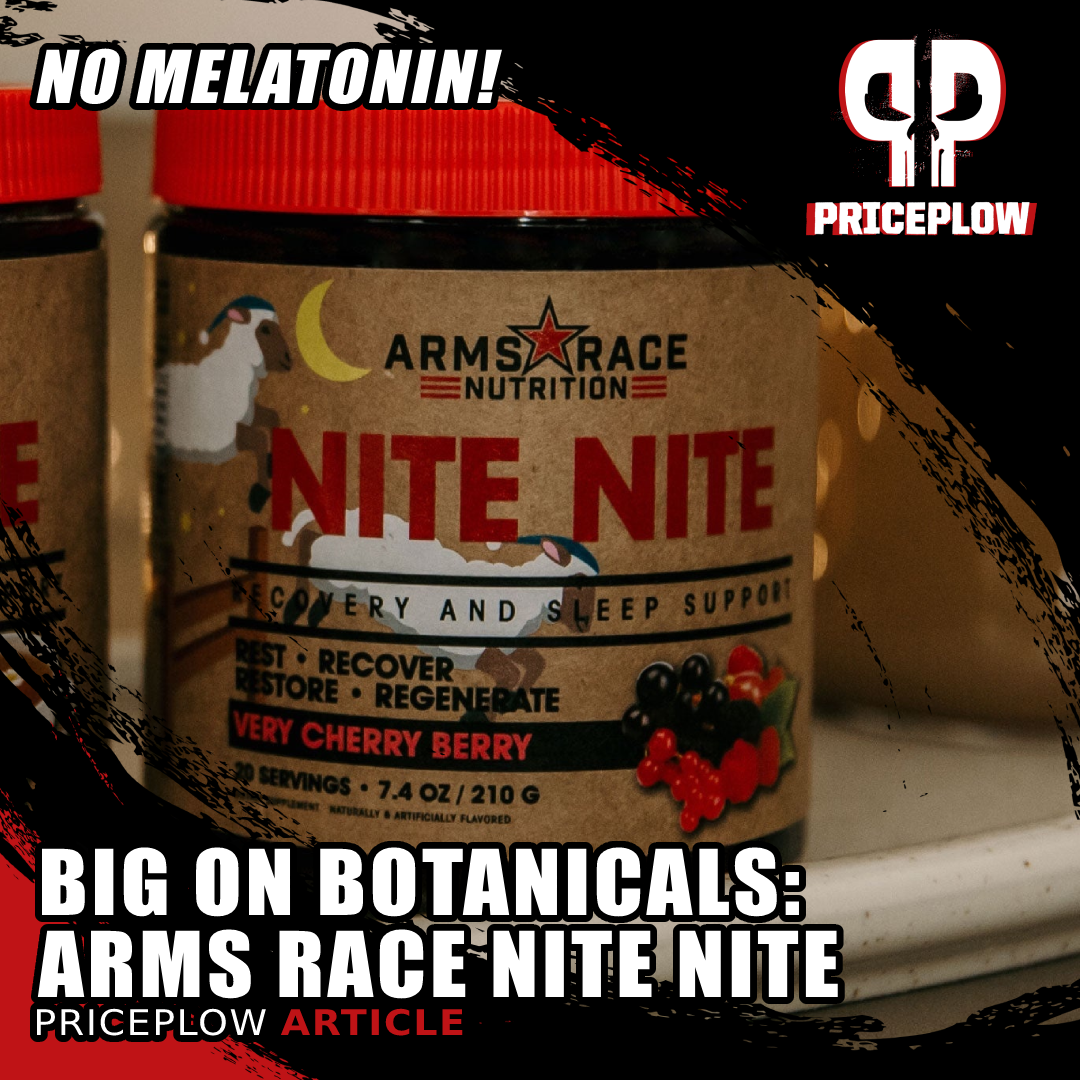
No melatonin and big on botanicals -- Arms Race Nutrition's Nite Nite sleep aid is exactly what much of PricePlow Nation has been looking for! Clarity steals the Very Cherry Berry flavor.
Find Focus and Calm Energy with the New Clarity
Arms Race Nutrition prides itself on blending old-school dedication with modern science to deliver a strong line of supplements for driven, committed individuals - including the ARN team themselves. Such levels of dedication demand putting in hard work, which can be extremely taxing on the brain. The ARN Team knows this and, thankfully, they've created a product that can be of use in this regard.
Julian Smith found his success through an incredible amount of grit and determination, launching multiple business ventures while growing his online presence and making gains in the gym. Add Doug Miller's supplement and business expertise and David Dodrill's drive to the mix, and you have a team that's quite simply been unstoppable as of late.
Clarity is delivered in this science-backed, efficacious formula that can help raise your game to levels that help you spend mental energy on the things that warrant it, not the things that are going to waste it and hurt your mood. If you need some help locking into your priorities and keeping your spirit on-point, Clarity powder is worth checking out.
Arms Race Nutrition Clarity – Deals and Price Drop Alerts
Get Price Alerts
No spam, no scams.
Disclosure: PricePlow relies on pricing from stores with which we have a business relationship. We work hard to keep pricing current, but you may find a better offer.
Posts are sponsored in part by the retailers and/or brands listed on this page.
Note: This article was originally published on March 25, 2021 and was updated on October 25, 2022 with the new powder label. The capsule version may still be available - for a write-up, please contact us.
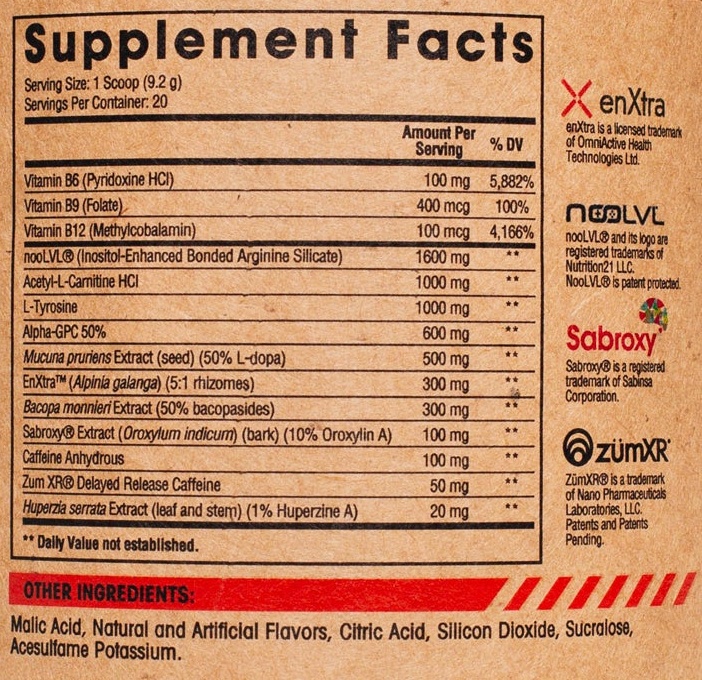
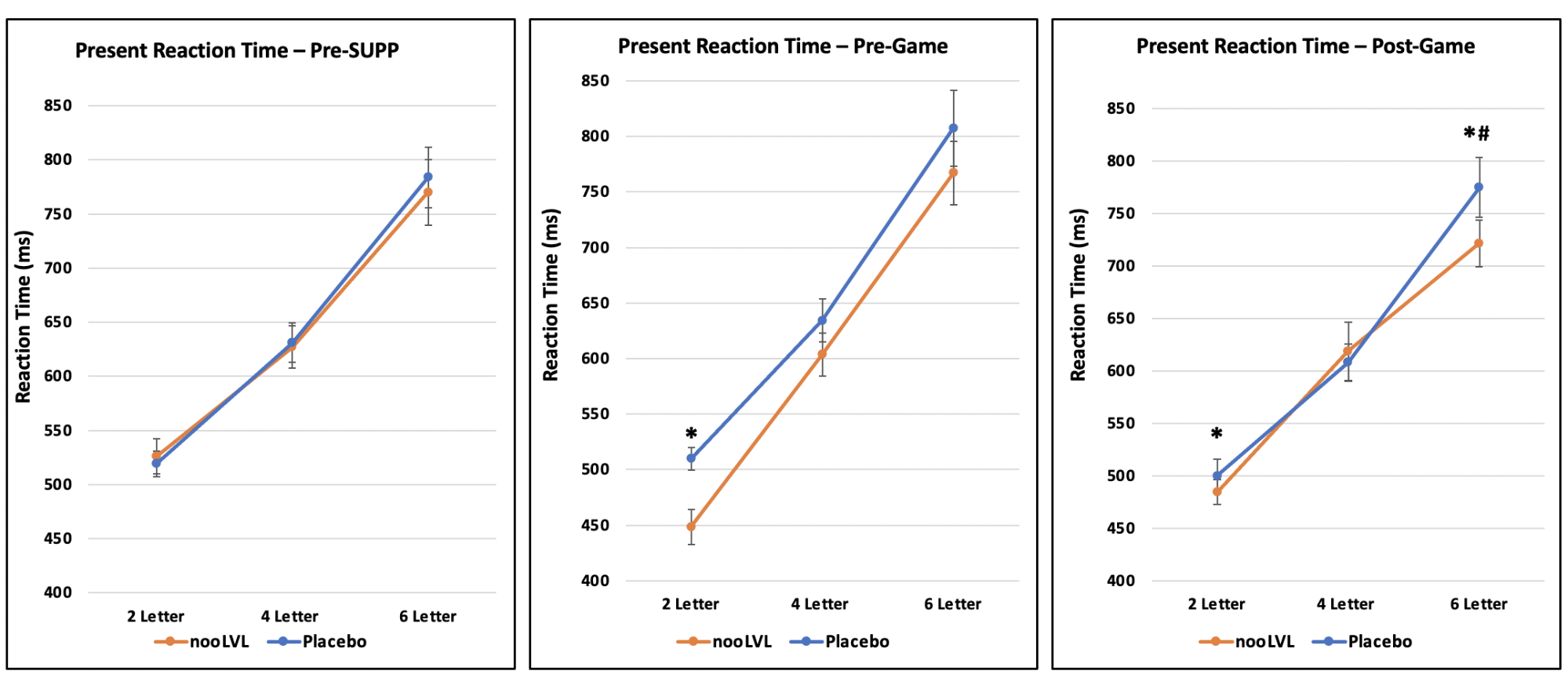
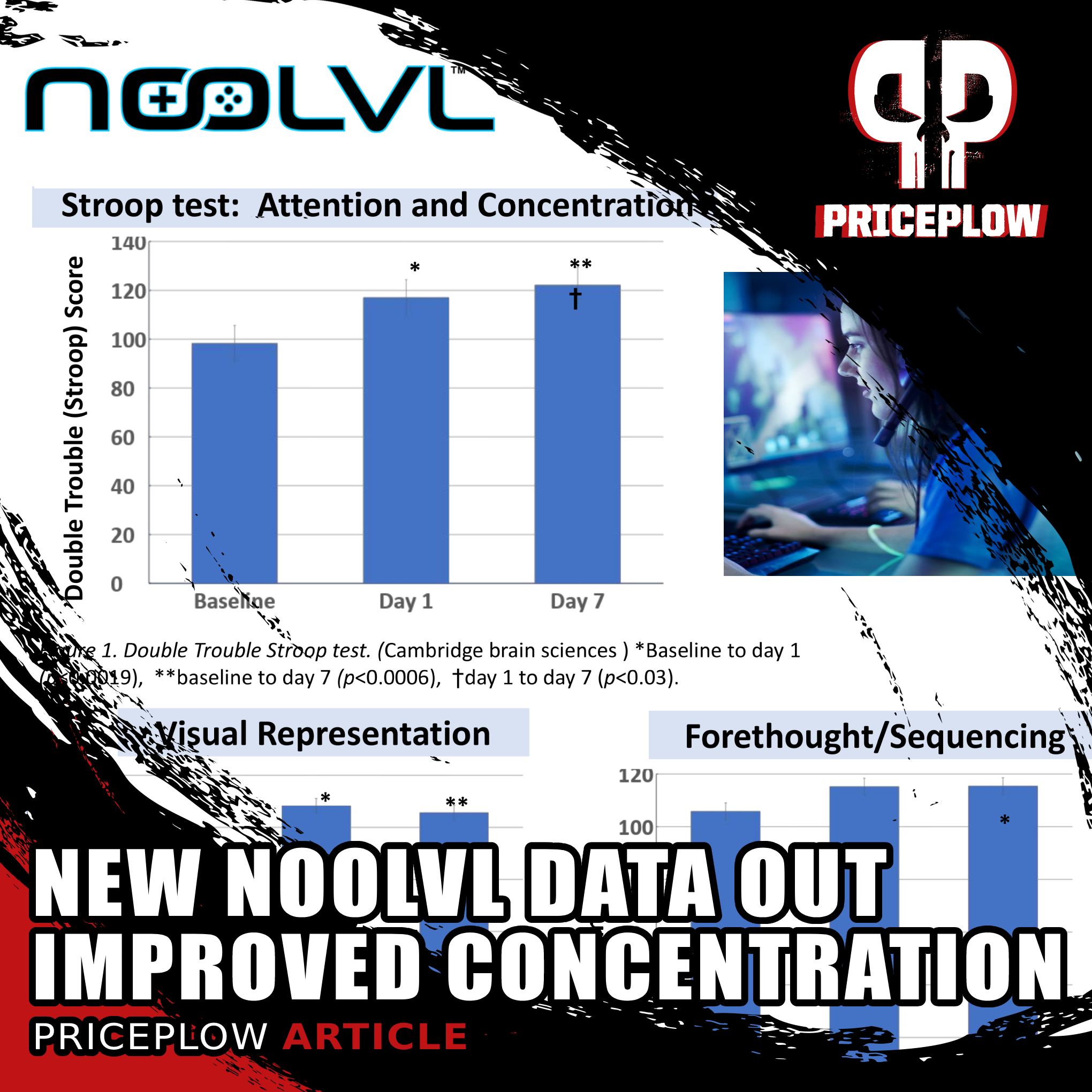
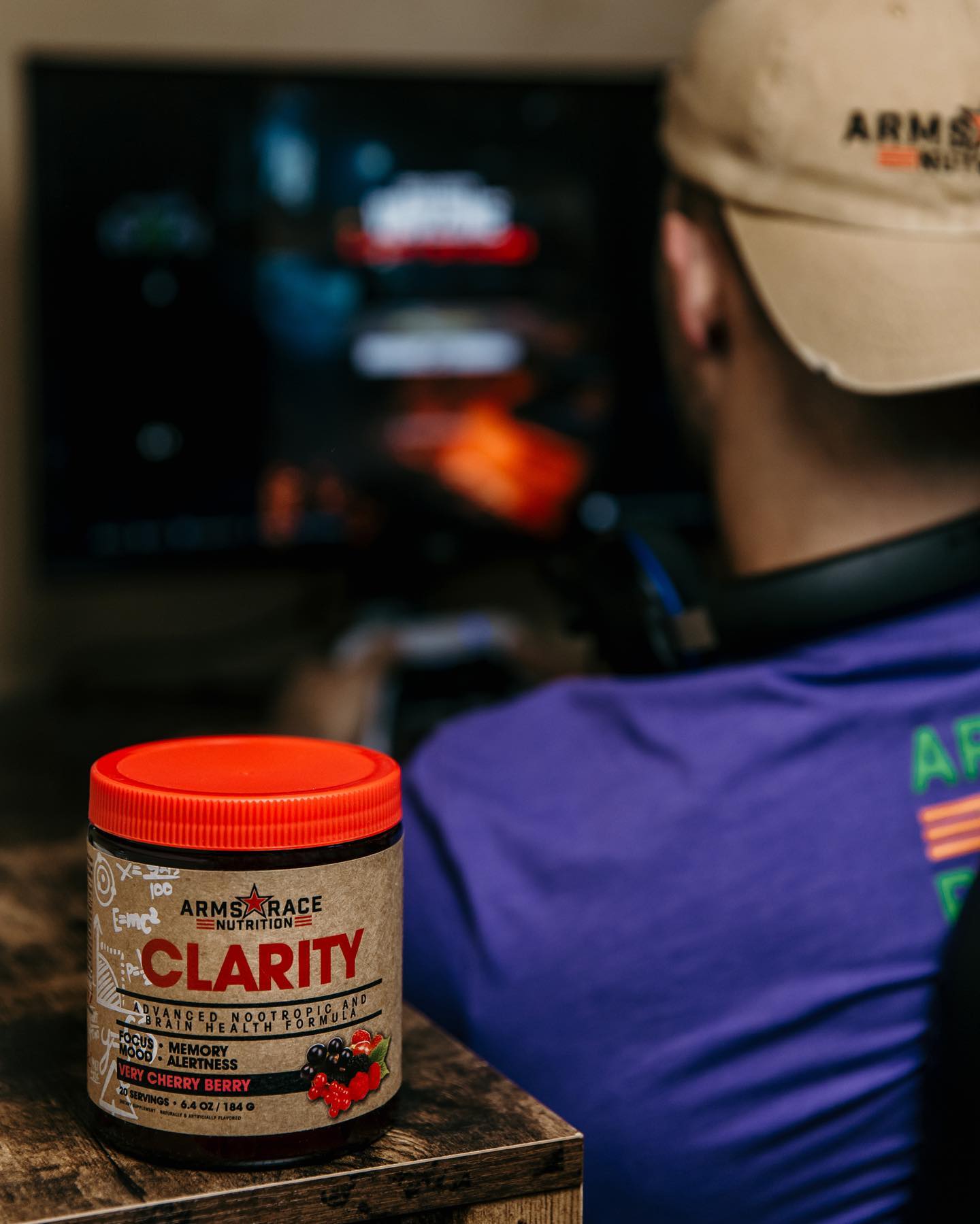
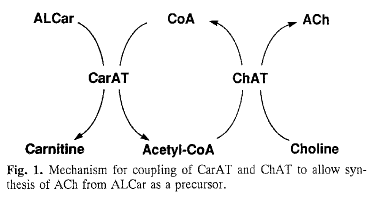
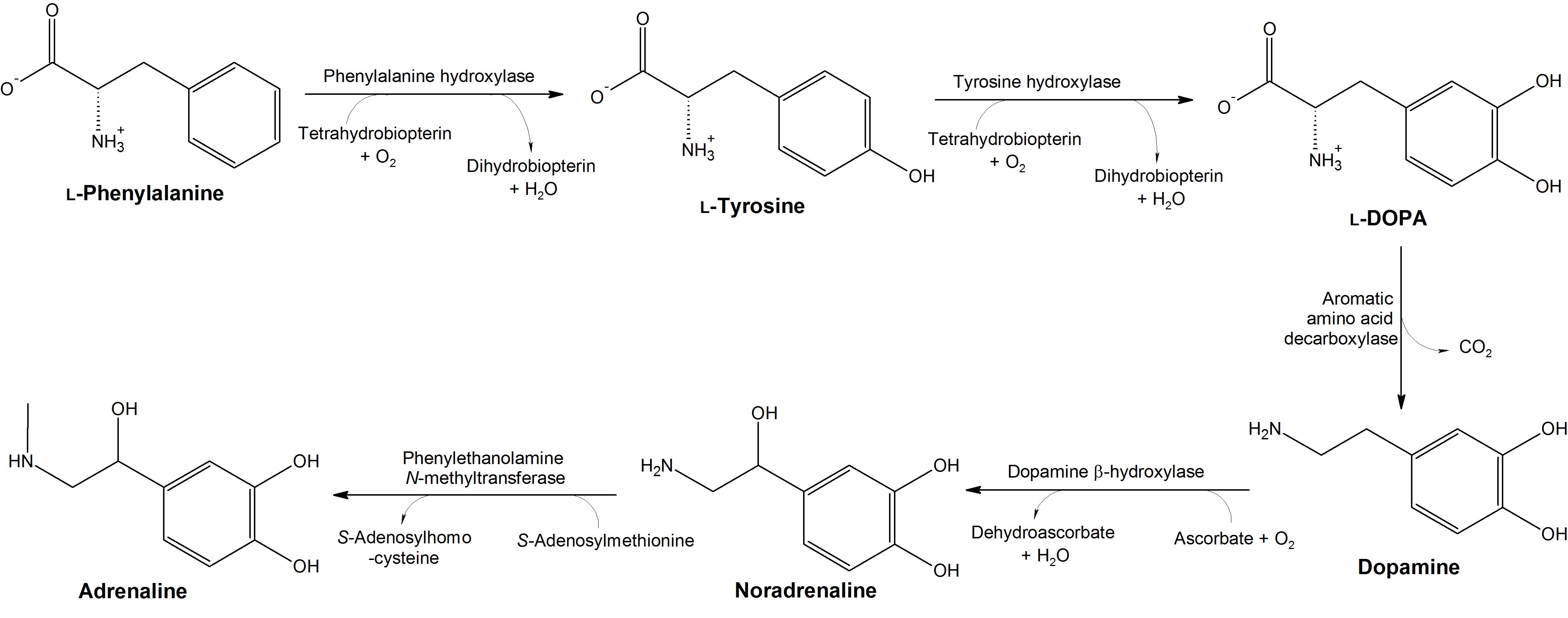
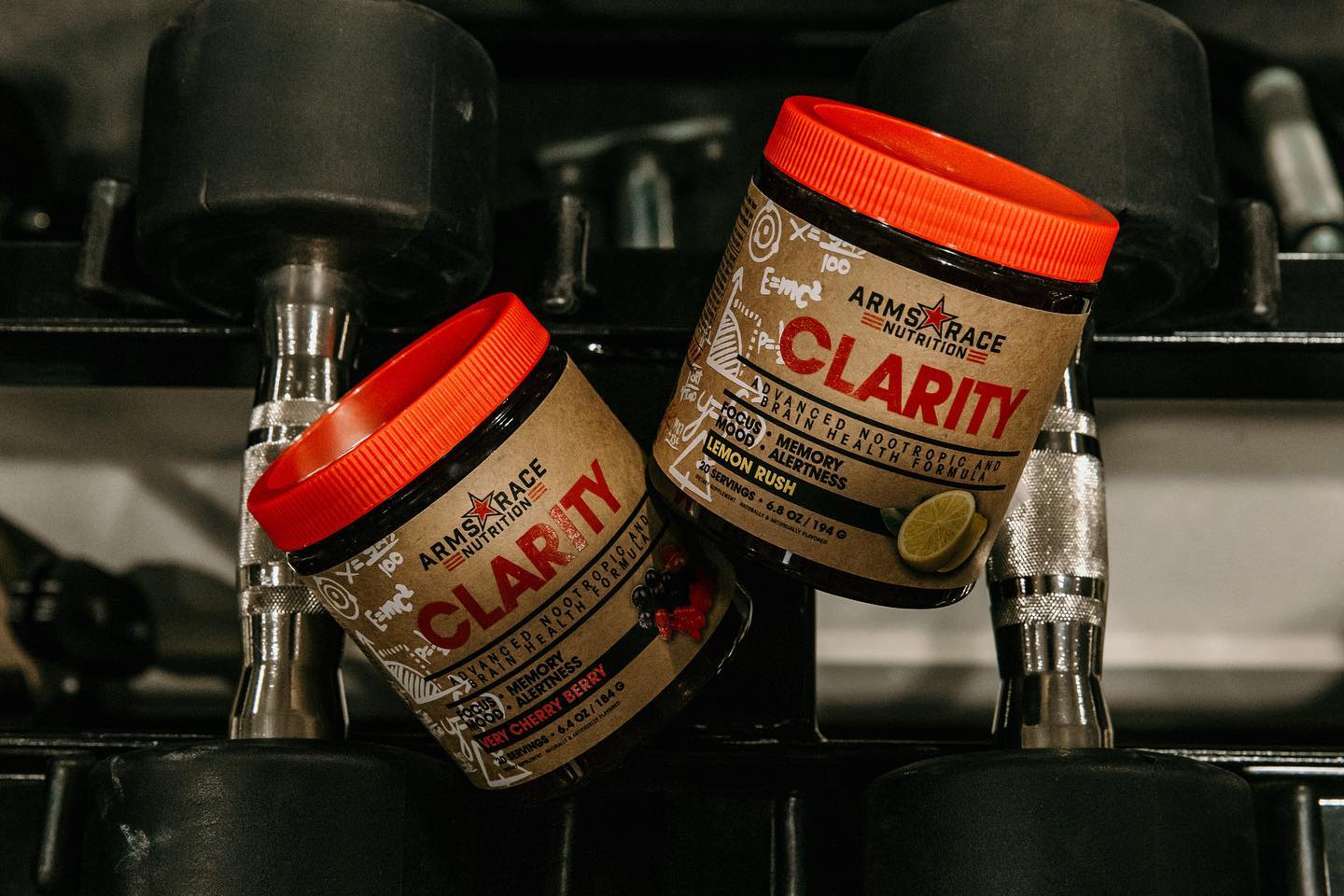
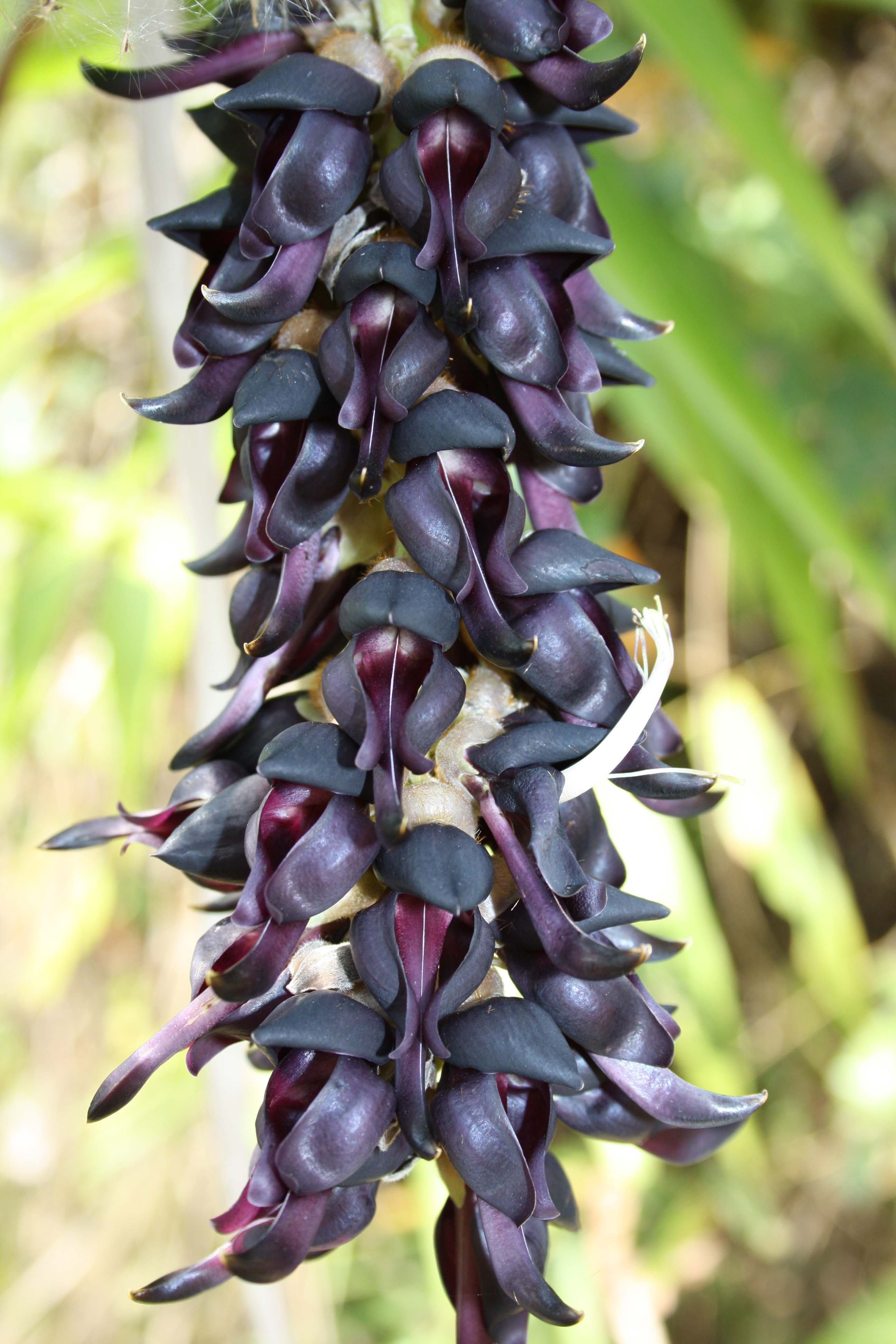

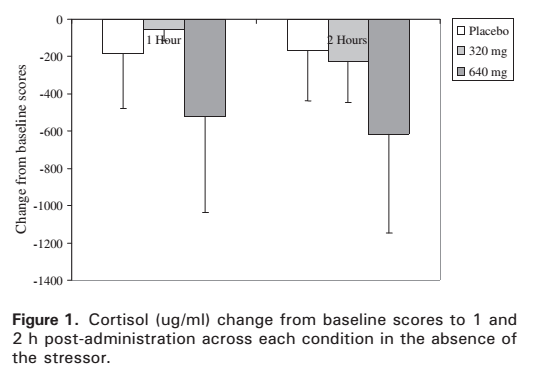
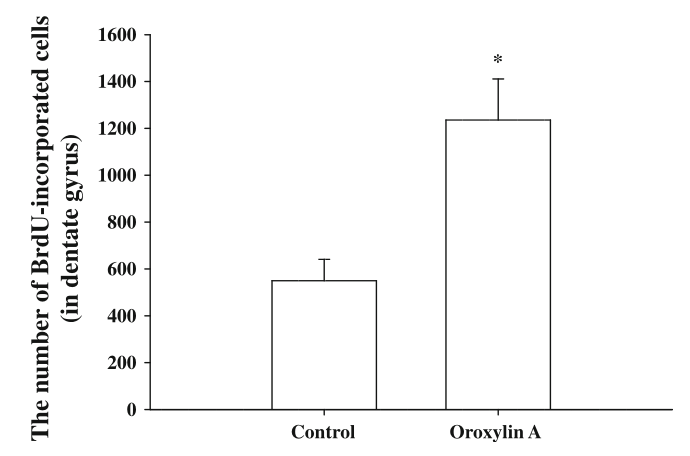
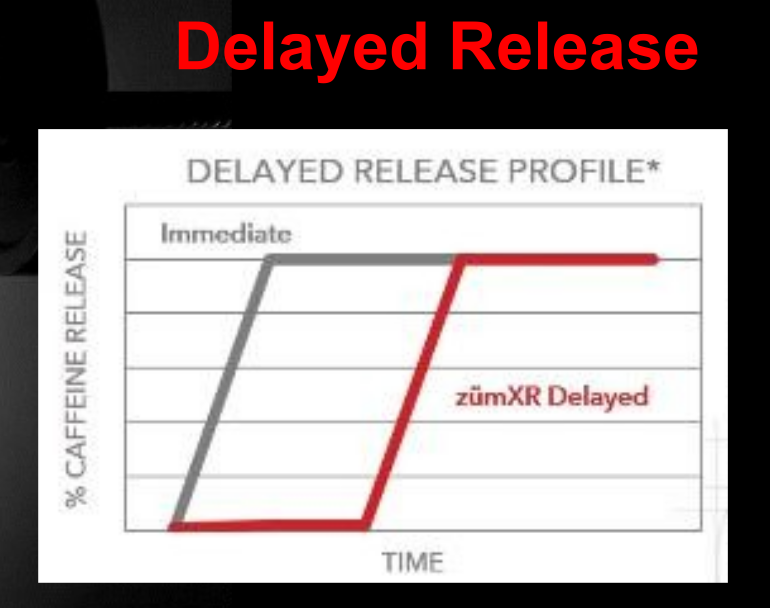



Comments and Discussion (Powered by the PricePlow Forum)